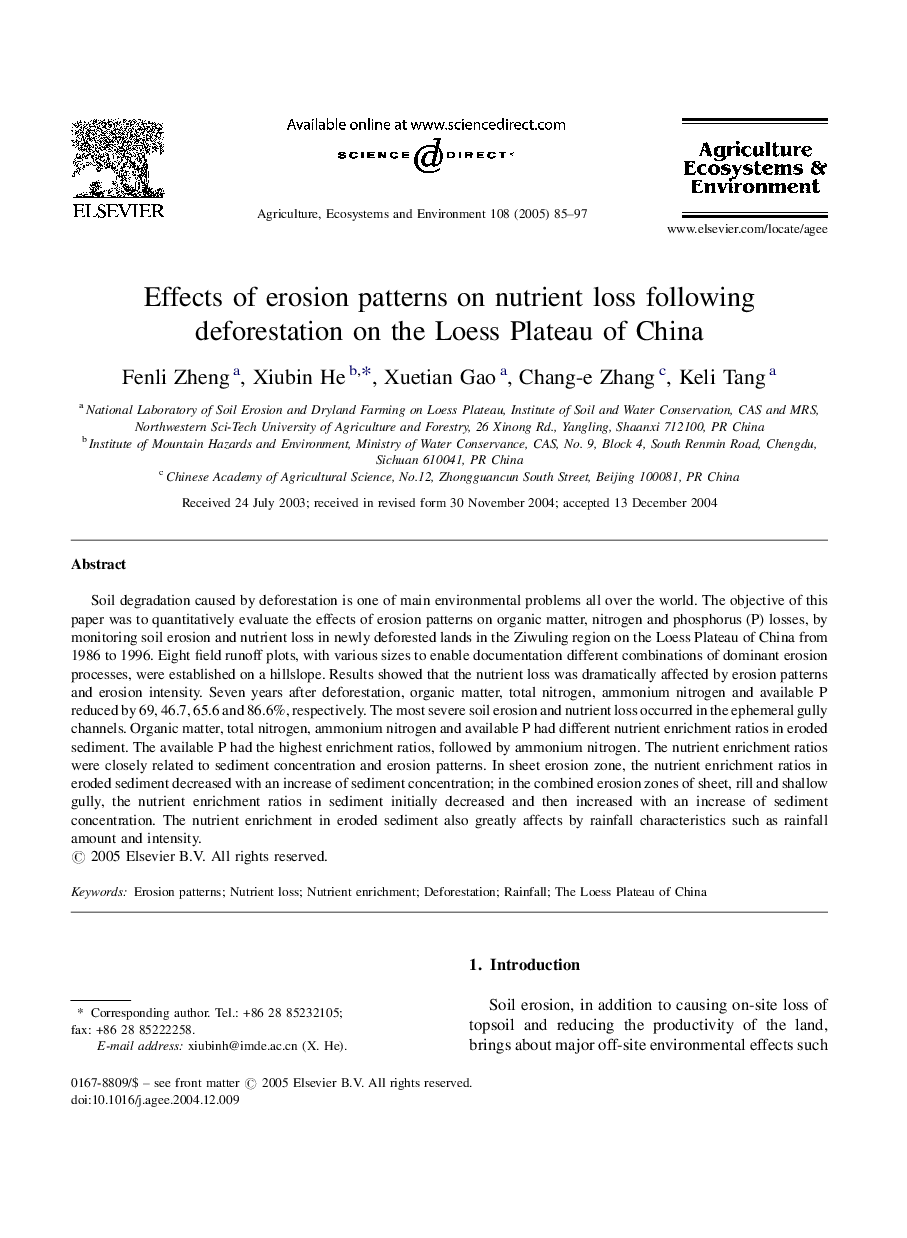| Article ID | Journal | Published Year | Pages | File Type |
|---|---|---|---|---|
| 8970821 | Agriculture, Ecosystems & Environment | 2005 | 13 Pages |
Abstract
Soil degradation caused by deforestation is one of main environmental problems all over the world. The objective of this paper was to quantitatively evaluate the effects of erosion patterns on organic matter, nitrogen and phosphorus (P) losses, by monitoring soil erosion and nutrient loss in newly deforested lands in the Ziwuling region on the Loess Plateau of China from 1986 to 1996. Eight field runoff plots, with various sizes to enable documentation different combinations of dominant erosion processes, were established on a hillslope. Results showed that the nutrient loss was dramatically affected by erosion patterns and erosion intensity. Seven years after deforestation, organic matter, total nitrogen, ammonium nitrogen and available P reduced by 69, 46.7, 65.6 and 86.6%, respectively. The most severe soil erosion and nutrient loss occurred in the ephemeral gully channels. Organic matter, total nitrogen, ammonium nitrogen and available P had different nutrient enrichment ratios in eroded sediment. The available P had the highest enrichment ratios, followed by ammonium nitrogen. The nutrient enrichment ratios were closely related to sediment concentration and erosion patterns. In sheet erosion zone, the nutrient enrichment ratios in eroded sediment decreased with an increase of sediment concentration; in the combined erosion zones of sheet, rill and shallow gully, the nutrient enrichment ratios in sediment initially decreased and then increased with an increase of sediment concentration. The nutrient enrichment in eroded sediment also greatly affects by rainfall characteristics such as rainfall amount and intensity.
Keywords
Related Topics
Life Sciences
Agricultural and Biological Sciences
Agronomy and Crop Science
Authors
Fenli Zheng, Xiubin He, Xuetian Gao, Chang-e Zhang, Keli Tang,
